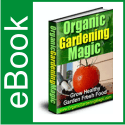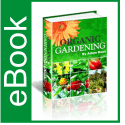How to Plant a Vegetable Garden In Your Backyard
How to Plant a Vegetable Garden In Your Backyard
Article by Musarrat Sheikh
Eating of fresh picked vegetables is one of life’s altering experiences but you have to know the source of these vegetables in order for you to appreciate hat you are taking. For you to be able to enjoy fresh vegetable supply you can choose to have your own vegetable garden which is a rather simple thing to do if follow the following guidelines:You should first think of the vegetables that you enjoy eating and give the priority to those that are prized for incredible flavor when eaten fresh from the garden and this will include beans, peas, tomatoes, young spinach, sweet corn among many others. The next thing to do is to prepare a plot where you will plant these vegetables and this will require you to get a flat ground that gets full sun nearly all day. You should then break up the land and turn the soil not forgetting to add compost or other organic materials. The sunshine is very important for most vegetables especially if you live in areas with cool weather which is experienced in early spring, early fall and winter. You should then figure out how much growing space you have and plant accordingly. For example tomatoes need to be spaced about 2 feet from each other, pumpkins need to be at least 4 feet from each other, lettuce can be grown in a solid mat etc. The growing requirements of each vegetable will be provided for in their seed packets or you can find them in catalogs or books for growing vegetables. It is important to choose crops that do not require too much room especially if you have a small vegetable garden or you grow vegetables in a container. For example lettuce is best planted in a pot while tomatoes are best planted in hanging baskets. For those plants that climb and vine such as pole beans and cucumbers they can be trained up a wall in order to for them to take up less room horizontally. Herbs and parsley are supposed to be tucked into flower beds. You should schedule plantings around two main growing seasons which will vary by region and this will be the cool which is during the spring and the fall and warm which is the summer. The common cool season vegetables will include carrots, cabbages, lettuce, potatoes, peas, spinach, turnips, beets, cauliflower, broccoli and radishes while the warm season crops will include corn, beans, melons, peppers, pumpkins, tomatoes, cucumbers, eggplant and squash. Some seeds should be sowed directly in the ground as they are known to grow best that way and this will include carrots, corn, beans, beets, chard, peas, melons, squash and turnips. Starting seeds are of course much less expensive than planting seedlings sold in flats, pots and packs. You should start with nursery seedlings of certain other crops unless you are an experienced vegetable grower and this is because these plants tend to do better when set out in the garden as seedlings and this will include eggplant, broccoli, cabbage, cauliflower, peppers and tomatoes. Squash and cucumbers are the few plants that you can plant as effectively as either seeds or seedlings. Always buy seeds at nurseries or by mail order and this should start just after the New Year when the selection is the freshest. It is important to look for those seed packets that have been marked as having been packed for the current year.Sow seeds that are of colorful radishes or giant sunflowers.
About the Author
This article touched the basics of the topic. I have 2 more resources related to the above. They are http://www.growguides.net/how-to-grow-a-vegetable-garden.html”>how to grow a vegetable garden and how to plant a vegetable garden. Do consider reading them.
Use and distribution of this article is subject to our Publisher Guidelines
whereby the original author’s information and copyright must be included.

 September 29, 2012
September 29, 2012 







